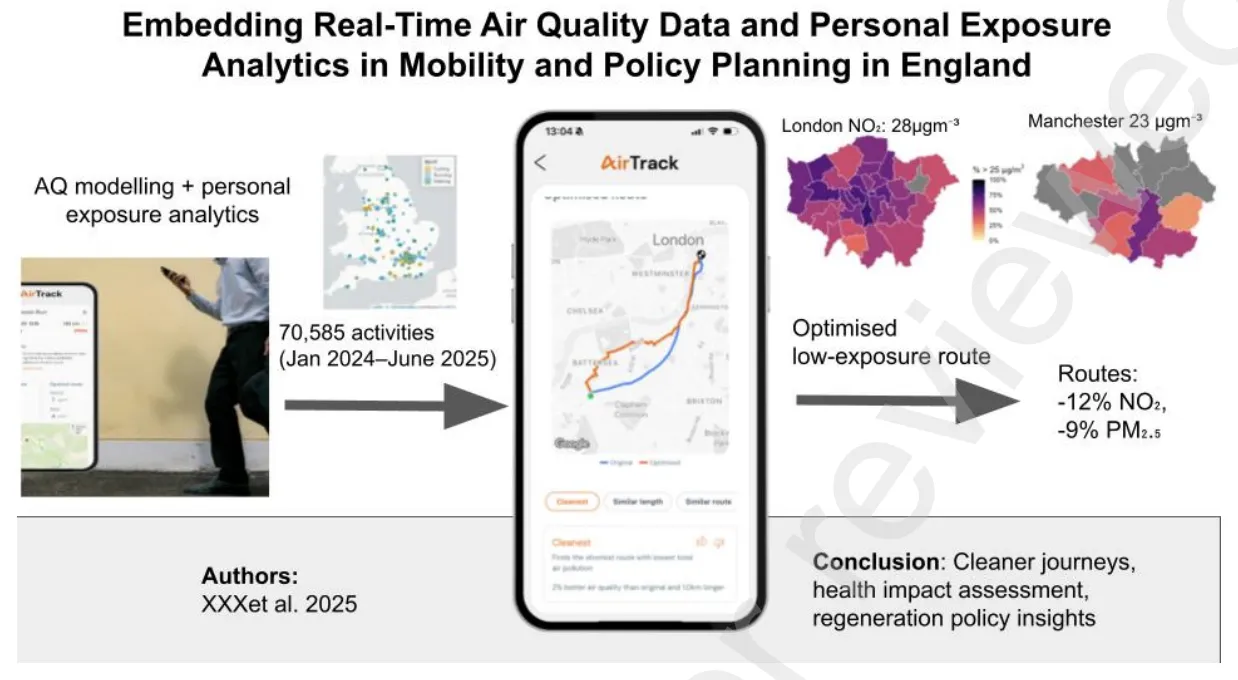World Economic Forum: Why and how business leaders should include air quality in decision-making

See full article here. Image: Unsplash/Wonderlane
When outdoor clothing brand Patagonia’s founder, Yvon Chouinard, declared the company was “in business to save our home planet,” it marked a turning point in how corporate leadership could be redefined in the climate era.
Implementing that bold policy earned Patagonia a place on TIME’s list of the world’s most influential companies and set a new benchmark for purpose-driven business.
Today, forward-looking leaders are proactively integrating science, data and impact into their business and personal strategies. This stance aligns perfectly with the UN’s ongoing 2030 agenda to foster sustainable growth, human well-being and resilient economies.
Yet, air quality plays a pivotal but unacknowledged role. The presence of harmful substances in the air, such as particulate matter, nitrogen dioxide and ozone, causes damage to human health, ecosystems and materials.
Air pollution is an environmental and public health emergency. It remains largely invisible in boardrooms even though it contributes to over 8 million premature deaths annually and costs an estimated 5% of global gross domestic product.
With 99% of the world’s population breathing unsafe air, it’s time for air quality to take its rightful place alongside carbon and climate in corporate decision-making, reflecting a strategic, ethical and commercially astute mindset fit for 21st-century leadership.
Air quality is overlooked
Indeed, despite its staggering health and economic impact, poor air quality has not received the strategic corporate attention it deserves – it drains productivity, increases absenteeism and raises sick days.
Historically, air quality has been seen as a regulatory hurdle or as a planning nuisance rather than a strategic opportunity.
For example, in motor vehicles, shipping and heavy industry, air pollution controls are mandated for compliance, yet often treated as a cost burden rather than a strategic imperative.
In the built environment, air quality assessments are often treated as a box-ticking exercise in environmental impact assessments, sometimes overlooking actual design or operational decisions that would reduce exposure or improve the health of residents and staff who live and work nearby.
Even in sports, nutrition and sleep data have become standard for elite performance; yet, polluted air – which directly affects lung function and endurance – is still left off the dashboard.
Corporate leadership
Nevertheless, there are encouraging signs of progress. Through the Alliance for Clean Air, the Air Pollution Footprint Partnership, investors urging stronger action and evolving frameworks such as the Corporate Sustainability Reporting Directive, a growing number of companies are beginning to track and report their air pollution emissions alongside their carbon emissions.
Understanding an organization’s emissions is the first step towards reducing them. The Climate and Clean Air Coalition and the Stockholm Environment Institute developed a practical guide that enables businesses to quantify their air pollutant emissions.
This was part of shipping giant Maersk’s motivation to join the alliance and contribute to its work on pioneering methodologies for measuring emissions across its operations and value chains.
Some members are choosing to go even further. IKEA, for example, has taken meaningful action by collaborating with farmers in northern India to repurpose rice straw and curb stubble burning, which is a significant contributor to PM2.5 pollution – comprising particulates measuring 2.5 microns or less – in the region.
The resulting product line, FÖRÄNDRING, exemplifies how environmental innovation can create shared value across sustainability, public health and brand equity.
Air pollution can travel long distances but can also be hyperlocalized, even varying by street and time. The corporate response must address the different needs and scales. Real-time modelling, exposure-based analysis and local emissions tracking could become standard tools for clean air champions within the private sector.
Emissions to exposure
To spark further impact and thought leadership from the top by impactful executives, clean air must be recognized as a strategic priority and a signal of forward-thinking governance.
By focusing on exposure, not just emissions, companies can gain visibility into areas that were previously overlooked. Tools such as AirTrack Enterprise offer a breakthrough, whether it’s commuters navigating congested city streets or field engineers operating near diesel generators.
These insights empower organizations to move beyond passive reporting and towards active harm reduction, through exposure-aware route planning, smarter scheduling and even the strategic sourcing of suppliers with strong air quality performance.
This could even be bolstered within organizations by CEOs integrating air quality metrics into executive compensation or performance reviews.
The reward is healthier employees and customers, more resilient operations, stronger brand trust and leadership that places environmental health at the heart of decision-making.
Air quality as a boardroom priority
As investor expectations rise and health-conscious consumers become more discerning, businesses that embed air quality into their decision-making will gain a clear edge. Proactively integrating air quality into strategy will enable companies to:
- Reduce absenteeism, improve productivity and decision making and support healthier, more resilient teams, leading to measurable returns on human capital investment.
- Differentiate themselves in tenders, investor conversations and environmental, social and governance rankings, attracting capital and talent aligned with responsible environmental practices.
- Pre-empt future regulation, lowering risk and compliance costs.
Meanwhile, as the field matures, early adopters will capture outsized brand and market advantages.
Air quality as the benchmark
Amidst climate volatility, rapid urbanization and rising public health pressures, air quality will become one of the clearest indicators of whether a company is truly sustainable – not just in principle but in practice.
A new generation of business leaders is emerging who understand that air quality sits at the intersection of health, human resources, risk management, compliance, sustainability and executive strategy. It’s time for this issue to find its rightful place at the heart of the CEO’s agenda, to protect health and take ambitious climate action.
As Yvon Chouinard reminds us: “Earth is now our only shareholder and profits only happen when you do everything else right”.
The science is clear: we have the technology, while inaction is costly. What’s more, the competitive opportunity is real. The question is: will businesses lead or lag behind?


.svg)











